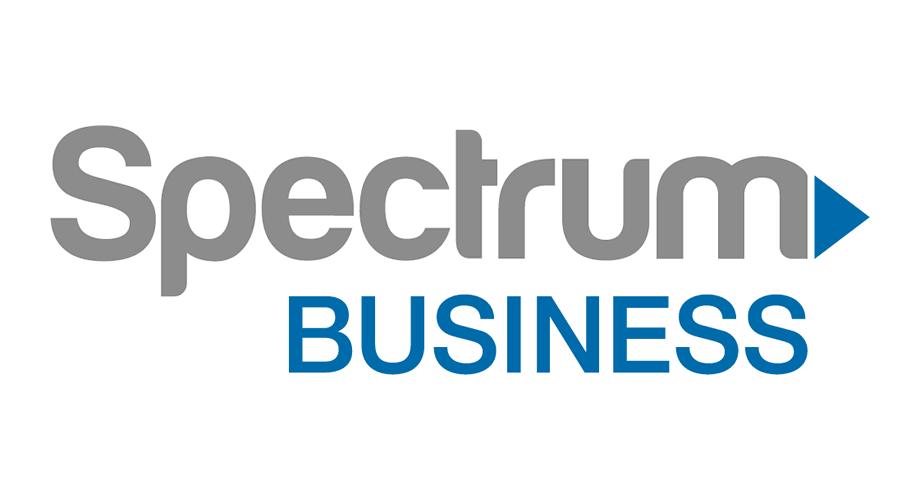Optimax provides quality HD video systems and modern IP phone systems。
Optimax systems have been installed in homes, banks, retail stores, hospitals, and restaurants. We minimize our operation costs and pass the savings to you. We guarantee the lowest price on all our services, please call for free estimate.
Please feel free to contact us. Monday - Friday: 7am - 5 pm Pacific Standard Time.
Optimax Enterprise Inc.
9436 La Rosa Dr. Temple City, CA 91780
Tel: 626-297-1344; 626-380-2328

年金
Illustrations of how Index Annuity works
- Details
- Written by Optimax
What is annuity? – Annuity guarantees an insured life-long stream of incomes that he cannot outlive.
If you save money in annuity account and defer receiving incomes for a period of time, the insurance company will pay interest to you. You may choose interest payment from options of fixed rates or variable rates. Index Annuity is an annuity paying interest in variable rates in accumulation period (before any income payout starts), and uses market performance index, such as S&P 500 as a reference to calculate interest rates.
The distribution phase of Index Annuity has the same payout options as immediate annuity, such as: life, joint-life, fixed periods, etc.
Benefit of Index Annuity: good for people who are not satisfied with fixed interest rates and not willing to risk investment loss.
There are 3 major types of plans. I am going to use the historical returns of S&P 500 2001-2005 to illustrate how they work.
1. Participation rate, floor, spread
Nationwide offers: as of Feb 2019, Participation rate: 50% of S&P 500 index, Floor protection = 0% loss, Spread = 1.95% as fees
In plain English:
- When the S&P 500 return is negative, floor protection applied. The actual interest rate will be 0.
- When the S&P 500 return is positive, participation rate and spread rate applied. The actual interest rate will be: S&P 500 return rate multiply 50% ,then deduct 1.95% . Assume the S&P500 return is 10% on year 2000, the interest rate provided in this plan will be 10%*50%=5%, then (5%-1.95%)= 3.05%.
In year 2001, S&P 500 annual return is -11.89%, that year we don’t have growth or loss, as the floor protection applied.
In year 2002, S&P 500 annual return is -22.10%, that year we don’t have growth or loss, as the floor protection applied.
In year 2003, S&P 500 annual return is 28.68%, for calculating rate of return, we need to multiply 28.68% ith participation rate 50%, the result is 14.34%. Then we need also need to deduce spread fees 1.95%, the result 14.34%-1.95% = 12.39%. In 2003, investor’s principal would grow from $100,000 to $112,390.
In year 2004, S&P 500 annual return is 10.88%, for calculating rate of return, we need to multiply 10.88% ith participation rate 50%, the result is 5.44%. Then we need also need to deduce spread fees 1.95%, the result 5.44%-1.95% = 3.49%. In 2004, investor’s principal would grow from $112,390 to $116,312.
Using the same mechanics, in the 2005 the principal will grow to $116,900. Namely, when we put $100,000 into this annuity at the beginning of 2001, at the end of 2005 it will become $116,900.
2. Cap, Floor
Example 1: Pacific Life Index foundation offers : as of 2019 Jan., Floor = 0% loss, Cap=5.3%
In plain English:
- When the S&P 500 return is negative, floor protection applied. The actual interest rate will be 0.
- When the S&P 500 return is positive, when the return rate is higher than Cap rate, Cap rule applied. If the return rate is lower than Cap rate, then interest rate will be the same as the return rate. If the return rate is higher than Cap rate, then Cap rate will be the interest rate of that year. For instance, if the S&P500 return is 10% on year 2000, the interest rate provided in this plan will be 5.3%. (Return rate 10% is higher than Cap rate 5.3%)
- when the S&P 500 return rate is between floor and Cap, the return rate will be used as the interest rate of that year.
In year 2001, S&P 500 annual return is -11.89%, that year we don’t have growth or loss, as the floor protection applied.
In year 2002, S&P 500 annual return is -22.10%, that year we don’t have growth or loss, as the floor protection applied.
In year 2003, S&P 500 annual return is 28.68%, for calculating rate of return, the maximum we can get is 5.3%. $100,000 x 5.3%=5300. In 2003, investor’s principal would grow from $100,000 to $105,300.
In year 2004, S&P 500 annual return is 10.88%, for calculating rate of return the maximum we can get is 5.3%. $105,300 x 5.3%=5581. In 2004, investor’s principal would grow from $105,300 to $110,881.
In the 2005, S&P 500 annual return is 4.91%, which is lower than the Cap. The rate of return of that year is 4.91%. $110,881 x 4.91% =$5,444. The principal will grow to $116,325.
All in all, when we put $100,000 into this annuity at the beginning of 2001, at the end of 2005 it will become $116,325.
Example 2: Transamerica offers: as of Dec of 2018, Floor =2% minimum growth, Cap=5.5%.
In plain English:
- When the S&P 500 return is less than 2%, floor protection applied. The actual interest rate will be 2%.
- When the S&P 500 return is positive, when the return rate is higher than Cap rate, Cap rule applied, then Cap rate will be the interest rate of that year. For instance, assume the S&P500 return is 10% on year 2000, the interest rate provided in this plan will be 5.5%.
- When the S&P 500 return rate is between floor and Cap, the return rate will be used as the interest rate of that year.
In year 2001, S&P 500 annual return is -11.89%, as the floor protection applied, investor has 2% growth, $100,000 x2% =2000, the year end result is %102,200
In year 2002, S&P 500 annual return is -22.10%, as the floor protection applied, investor has 2% growth, $102,000 x2% =2040, the year end result is %104,040
In year 2003, S&P 500 annual return is 28.68%, for calculating rate of return, the maximum we can get is 5.5%. $104,040 x 5.3%=$5722.2. In 2003, investor’s principal would grow from $104,040 to $109,762.
…
In 2005, S&P 500 annual return is 4.91%, which is lower than the Cap. The rate of return of that year is 4.91%. $115,799 x 4.91% =$5,686. The principal will grow to $121,485. Namely, when we put $100,000 into this annuity at the beginning of 2001, at the end of 2005 it will become $121,485.
3. Performance Triggered Rate
Pacific Life Index foundation offers: as of 2019 January, Floor = 0% loss, Performance triggered rate = 4.9%, when index performance >0.
In plain English:
- When the S&P 500 return is negative, floor protection applied. The actual interest rate will be 0%.
- When the S&P 500 return is positive, the pre-set interest rate applied. No matter the return is higher or lower than the pre-set rate; 4.9% in this case.
2001, and 2002, S&P 500 returns are negative, so the growth rate is 0 at those years.
When market returns are positive, like 2003-2005, then the interest rate for growth are 4.9% fixed, no matter the actual rates are higher or lower than this 4.9%.
The potential issue of FIA
The declared rates may change in different year, with very few exceptions. Such as in Example 2, when we saw that insurance company TA offers higher rates than Paclife does. TA has higher CAP and higher minimum floor rate, which would produce better result. But TA indicates that its rates are subject to change year after year and PacLife declares it won’t change its rate once the contract takes effect. This variable is what we need to take into consideration when choosing annuities.
Other factors:
Also like CD saving in banks, the large amount you save, or the longer the time you want to save, the higher interest rate you may get. When you compare the interest rates of different annuities, you need to take these into considerations.
Isn't it useful?
年金– 退休生活的定海神針
- Details
- Written by Optimax
年金的要素及趨勢簡介
何謂“年金”?
“年金“是一種“保險合同“:保險公司保證你終身有固定收入到死為止。讓保險人免於因活太久而用盡儲蓄的恐懼; 適用於喜歡穩定收入的人。是 55-65歲接近退休的人士 做退休規劃時必須考慮的選項。
舉例: 假如你估計65 歲以後每月需要$4000來支撐生活固定開銷,而你夫妻屆時每月加起來可領$3500的社會福利金。 則你每月需要$500的額外收入來支付這個缺口。 這筆錢您可從銀行存款或退休賬戶(401k ;IRA)中領取。 但如果你害怕因為活太久而用光儲蓄,或你的投資的可能虧損會導致未來生活不夠錢開銷 。你覺得每月必須有鐵定$500的收入,你睡覺才能安穩。那你就應購買可以每月讓你領取$500到死為止的年金。保險公司只要取得你的現有年齡,計劃何時開始領取年金,打算每年領多少,就可以算出你應花多少錢買這終身年金。 (但每家保險公司的價錢不同)(參見視訊)
年金裡可以改變的選項
你若不是一買了年金合約後就立即要終身領取年金,保險公司提供不同的方法讓你可用這筆錢去再賺錢。保險公司除了提供終身領取制,另外也提供較短時間的定期領取制 。
Accumulation Phase (資本增長階段) –投保人存放本錢後不立即使用,他的本金就會既可以被拿來滋生利息或投資得利
保金成長的方法
- 利息賺取型(fixed-income type,fixed annuity)為了鼓勵人們早早將錢放在保險公司,希望投資人將錢多存放幾年。保險公司就付利息給保險人。 保險人賺得的利息就被用來給該保單的增值。利息計演算法可選擇固定的,也可選浮動的(猶如銀行貸款)。 利率可能為保險公司的宣告的固定利率,或可用按照其它指標(indexes)為參考值用特定公式計算出來會浮動的利率。投保人的錢有如放在銀行裡的定期存款般。
- 投資變動型(variable annuity)保險公司讓投保人將錢投資於某些特定的共同基金(mutual funds), 讓這投資的結果成為未來年金攤分時的基礎。投保人可借共同基金的高成長潛力,而使得本金的成長可大大高於只能賺取利息的年金計劃(fixed annuity)。反之,投資共同基金也會有投資失利的情形,如此將致使將來可領取的金額變少。投資結果好壞與保險公司無關,投保人自負風險。這種型別的年金合同的特點是:不適合即將退休的人購買,因為如果投資不利會造成投保的本金的虧損無法於短期內賺回本,如此一來就喪失買年金求“保障收入”的本意。
Distribution Phase(資本結餘攤分階段)-年金的不同領取方式
- Life- 終身制。讓受保人領到死。如採用此計劃,一旦開始領取年金就永遠不得改變計劃。死得早而收不回本金投入的總額的話算你虧本,但如你壽命很長而使領到的錢遠大於投入的資本的話算你賺。假設:你投入$100,000買的年金,可以從65歲起每月領$500。 但你於70歲就過世,你只領了3萬,剩餘沒用到的錢(7萬)你也不能過繼給孩子。但你如活到82歲以上,即使你領的錢總額遠超過投入的錢,你仍能繼續領取到到過世為止。
Joint-Life 保險公司也提供讓未亡人領取終身的年金;也就是把受保人夫妻視為為一體,兩人中較晚死亡者仍可領年金到身故。
- Fixed-Periods – 定期制。 假如你採用終身領取的方式,你可能會因太早過世致使覺得不划算(如上例)。 於是乎保險公司也提供定期領取的方式,約定好時間的內將錢加息後返還給你- 如20 年期的計劃;保險公司把錢分20 年給你,如你還沒領到20 年的份就死去, 保險公司會把餘款給你的指定繼承人。如20年後你還活著,你也不能再領了。 假設你家族成員的壽命一般沒超過85歲,你可以考慮於65歲時用這種定期攤分法。
最新流行的 年金產品- 希望年金能有高成長又無風險的成長
- 指數型年金equity indexed annuity-參考股市指數來計算利息-。近年來投資人常無法滿足於保險公司為年金提供的固定利率。保險公司於是提出與股市指數index相關的利息計算方法;如:某年金可以跟S&P500 標普500指數的 成長率為利率, 但又以5.5% 為上限; 但當標普500指數的 成長率為負數時,該本金維持原來的數目,被保障沒有損失。
假設某年S&P500 上漲10%,則該投資人可賺5.5%的利息。 次年S&P500 下跌8%20%,則該投資人的本金維持前一年的數字,沒有虧損。第三年S&P500上漲3%,該年以3%計息加入年金的本金中。
- 最低 收入保障合同(income rider )—讓年金投保人可投錢於共同基金賺取高報酬但又不必怕虧本的額外保險-。這類產品可有許多不同的花樣可以選擇,但基本精神如下:
於資本增長階段,此時你變動型年金裡的共同基金投資組合隨市場變化而有盈虧;此時保險公司提供另一保障最低金額的保險。如果於攤分提領年金時:你的實際投資結果大於這保證金額,那就用實際的投資結餘作為攤分年金的基數;如果你的實際投資是低於這保證金額,就依據這保證的金額作為攤分年金的基數(通通依照合同裡的講好的提取比率拿錢)。
例如: 某年金的“收入保障合同“保障:年金基數在10年內以7.2%年利率成長,並讓你可於65歲開始到身亡止每年可提取5%的 投資結果(實際投資結果或保數額,兩者中較大者)
於是:你於55歲時用$100,000買變動型年金而投資於某共同基金,並加買了該“最低收入保障合同”。 於是65 歲時你的“保證年金基數”累積成為$200,000(7.2% 年複利計算)。如果當時你年金裡的實際投資結果只有$180,000, 則保險公司用$200,000 為基數,而你終身每年可以領$10,000 ($200,000 x5%)。 如果當時你的實際共同基金投資結果是$240,000, 則保險公司用$240,000 為發錢的基數,每月领$12,000($240,000 x5%)。有的保险公司让你用傳統的年金終身制或定期制領取实际的投资结果。
保障愈多的合同其費用也必然更高, 加起来每年要支付投资额的4%上下,你要注意你的基金是否能賺足夠的利潤來支付這些額外的保險。
年金可以滿足退休人士求安定無憂生活的需要。但要注意應用上述基本原理來挑選適合你的年金。因為年金一般要求你長期不得毀約拿回本金,除非繳納罰款,因此 購買時須要詳細瞭解每一細節條文,避免買到不適合的年金會而長時間後悔。
年金
- Details
- Written by Optimax
年金是一種由保險公司發行的投資工具; 它要求投資人做長期投資,用政府稅負上的優惠(延稅)來成長。保險公司保障投資人在退休後可以終生領取一固定收入(guaranteed income)。 投資人也可選擇短期的年金領取方式。
因為年金成長與提領時有不同的模式,可產生不同的產品組合。投資人應跟理財專家一起討論年金的各選項,組合起一個與你的退休規劃目標一致的產品,如此才能讓你滿意。對一人適合的年金產品,對他人不見得也是好的。
年金可提供:
- 保证固定的收入
- 用來節稅
- 轉為遺產
- 優於銀行定存的利率
年金运作的形式
年金是保险公司与你之间的一张合约。你先交给保险公司一笔或多笔的钱,保险公司将这些钱拿去投资成长,于双方同意的未来连本带利还钱给你。届时你提领的方式可以是一次性或多次性的。
| 投入 | 資本成長模式 | 提出 |
| 一次性 | 固定利率型 | 一次提领 |
| 多次性 | 變動型-買共同基金 | 多次-定额,定期 |
| 固定利率+浮动利率(指数型) | 终生定额型 | |
| 轉為遺產型 |
年金是保險公司與你之間的一張合約。你先交給保險公司一筆錢,保險公司將這些錢拿去投資使其成長,在未來一特定時間連本帶利還錢給你。不同於銀行定存的是, 屆時你可於一次性提領或以終生分期方式提領。 你可使年金成為你退休收入的一組成部分。
依資本成長模式來分,年金有下列三類
變額型 -買共同基金型
保險公司讓你將錢放在特定的共同基金的賬戶裡,這些賬戶由專業經理人買賣股票或債券。由於這類投資賬戶會受市場起伏的影響,變額型年金有賠錢的風險, 但其價值上漲的速度也會較快。末了,年金方可提領的款額是依照你此賬戶裡錢的投資結果而計算出來的。多賺就多拿,少賺就只能少拿。
固定利率型 - 有如銀行定存
保險公司向你借錢的契約。他們每年付固定的利息,讓你的本金在可以遞延交資本利得稅的情形下成長。它保障在你退休時可以有固定金額的收入。 它的風險性低,很適合保守的退休人士。
指數型 -固定利率+浮動利率
指數型年金是固定利率年金的一種,保險公司以(最低保障利率+浮動利率)來計算該給你的利息。浮動利率是參考股市指數而來的。你的錢並沒有拿去股市投資。你的本金在可以遞延交資本利得稅的情形下成長。它保障在你退休時可以有固定金額的收入。
該注意的是保險公司的能否支付其保證的福利,是根據該公司屆時的財務能力而定的。
年金範例
- Details
- Written by Optimax

即將退休的人而不願承受投資損失的人應該考慮買年金。
“年金”是保險公司讓客人可以長期領取退休收入的一種產品。做法是:客人將一筆錢交給保險公司存放一段時間, 保險公司付客戶利息,讓錢的數額成長。在預定的未來時間,保險公司開始每年付回該客戶一固定數額的錢的直到该客人老死為止。 舉例來說, 老王於50 歲時將$100,000 交給 AA 保險公司。打算於他65歲時開始提出。 保險公司精算以後, 答應在老王65歲時給老王每年$9,000 直到老王去世。
運用年金于退休規劃的例子
老王現今50歲, 打算65歲退休。他估計屆時可領社安金$1250, 但每月生活費需要$2000。此時 他需要確保退休時每月另有$750的收入。 現在他剛好手邊有$100,000 的存款。如果他以這筆錢跟AA公司買年金,该保险公司答應於65歲起每月给老王$750。 如此,老王于此时花10万买年金,老王於65歲時他确定每月可有$2000 ($1250的社安金+$750 年金)收入直到老死。他可以安心的睡覺了。
如果老王決心要將那$100,000投資股票/基金, 那結果可能是獲得更高的回報率。 但也可能在即將退休時遇上熊市, 股票暴跌 40% 如2008 年,他可能就65歲時還退休不了。
年金保險的特點
年金的風險與報酬率: 投資報酬率可能比投資股票低,但風險比股市投資風險低,因為沒有跌價虧本的可能。投資報酬率比銀行儲蓄高 但 風險比銀行存款高, 因為沒有FDIC 美國政府的保障;
年金的缺點是: 流動性差。 年金產品是一長期契約, 如果投資人想提前提前出來會受到限制。





